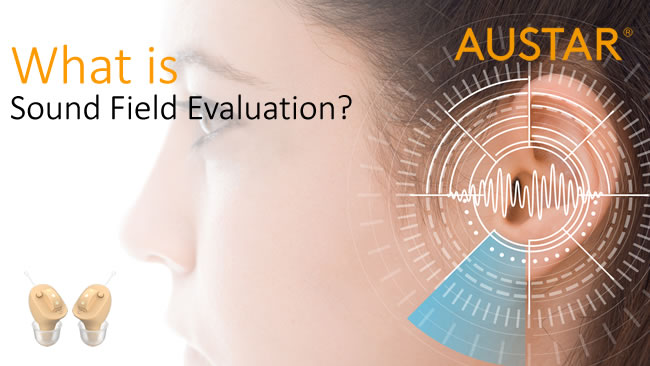What is sound field evaluation?
Sound field evaluation refers to the evaluation of hearing threshold for hearing aids. Before fitting a hearing aid, you need to do a test-pure tone audiometry, to determine the degree of hearing loss in patients with hearing loss. The result of hearing loss is called hearing threshold.
Optometry is required before glasses are fitted, and before hearing aids are fitted, a test is also required-pure tone audiometry, to determine the degree of hearing loss in patients with hearing loss. The result of pure tone audiometry is called the "hearing threshold", which is the smallest amount of sound stimulation that can cause an auditory response. Then, after the fitting, the user's hearing threshold will be improved to a certain extent, but how much is the specific improvement? Can you use pure tone audiometry? It is a pity that pure tone audiometry is not suitable for testing users' hearing threshold assessment after hearing aid.

Firstly, earphones need to be worn during pure tone audiometry. If you wear a hearing aid and then wear the earphones, it will easily cause the hearing aid to "howl" and the wearing comfort is extremely poor; secondly, the sound of the earphone cannot be evenly transmitted to the microphone of the hearing aid, which will Lead to larger errors. Therefore, we need to use another check-sound field evaluation.
Sound field evaluation generally refers to the evaluation of the hearing threshold of hearing aids, that is, the minimum stimulus that can cause an auditory response after testing the hearing aid. The test is required to be carried out in the "sound field", that is, a large sound-proof room, with one or more speakers (usually two) in the sound field. After they are arranged in the designated position, they should also be calibrated with a sound level meter. We call it sound field calibration. After the sound field is established, it must be calibrated. After a period of time (usually about a month), it needs to be re-calibrated, especially after the location of the facilities in the sound field is changed.
Before the test starts, guide the patient to sit at the "reference point" in the sound field, keep the head looking straight ahead, and wear the hearing aid on one side of the test ear (cleaning and maintenance is best in the early stage) to ensure that the battery is fully charged, and the other side The hearing aid remains de-energized or removed. The test rules are similar to the pure tone audiometry, which is "press the transponder (or raise your hand) when you hear the sound, even if the sound is small". The difference is that the test tone used in the pure tone audiometry is "dididudu" Pure tone, and the sound field test uses the "whooping" beep.
The initial sound intensity is generally 50~70dB, and the specific test method is the same as that of pure tone audiometry, that is, "raise five and lower ten". If there are two responses from the user after three sounds, the intensity is determined as the hearing aid threshold of the patient at this frequency. . The thresholds of 250Hz, 500Hz, 1000Hz, 2000Hz, 3000Hz, 4000Hz are measured sequentially, and the hearing curve after hearing aid is obtained, which can be compared with the naked ear threshold intuitively. Hearing aid fitters can also adjust hearing aid parameters based on the evaluation results.
However, the sound field evaluation also has its own limitations. It can only reflect the patient's hearing when wearing a hearing aid, but cannot reflect the average and strong hearing conditions. The hearing aid threshold is acceptable, which does not mean that the hearing aid effect is good. Yes, whether the effect is good or not is also closely related to the patient’s own resolution. Therefore, it is necessary to combine speech tests and other inspections for comprehensive evaluation. The fitting specialist should also make adjustments based on the subjective feelings of the patient during the adjustment process.
- Recent Posts
- The OTC Hearing Aid Wholesale Core – Customization, Compliance, and Smart Auditory Tech
- CADENZA A6: 100H Battery and 32-Channel Tech for OTC Hearing Aid Differentiation
- OTC Hearing Aid Dividends: CADENZA OEM/ODM Strategy for CVS/Best Buy Expansion
- Beyond Price: Why Global Distributors Choose CADENZA for OTC Hearing Aid Compliance and Volume
- Power Your Private Label: CADENZA Offers Unmatched OEM/ODM Scale for the OTC Hearing Aids
- The $100 Billion Question: How CADENZA Makes Quality Hearing Aids Affordable for Everyone
- Hearing is Believing: CADENZA Hearing Delivers Premium Quality Without the Prescription Price
- Discreet RIC Hearing Aids for a Natural Fit
- Smart Hearing Aids: App Control & Bluetooth for OTC
- Types of Hearing Aids
- BTE hearing aids
- ITE hearing aids
- Instant fit CIC hearing aids
- Rechargeable hearing aids
- RIC hearing aids
